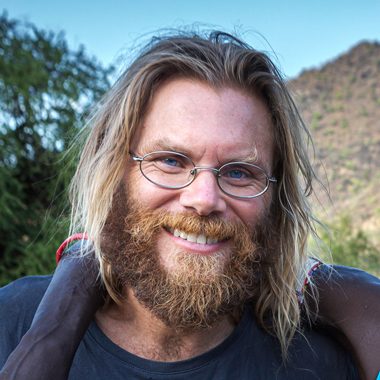According to oral tradition, the Baule people were forced to leave Ghana when the Ashanti Empire rose to power. While they were fleeing to the west for their lives, they came to the Komoe River, which they were unable to cross. With their enemies chasing them, they began to throw their most prized possessions into the river. It came to the Queen's Awura Pokou attention that their most valuable possession was her son. So that she had no choice but to sacrifice him, throwing in the river. Upon doing so, the hippopotamus rose from the river and allowed them to cross, saving their lives. After crossing, the Queen was so upset about losing her son that all she could say was "baouli," which means 'the child is dead'. From that point on, they were known as the Baoulé.
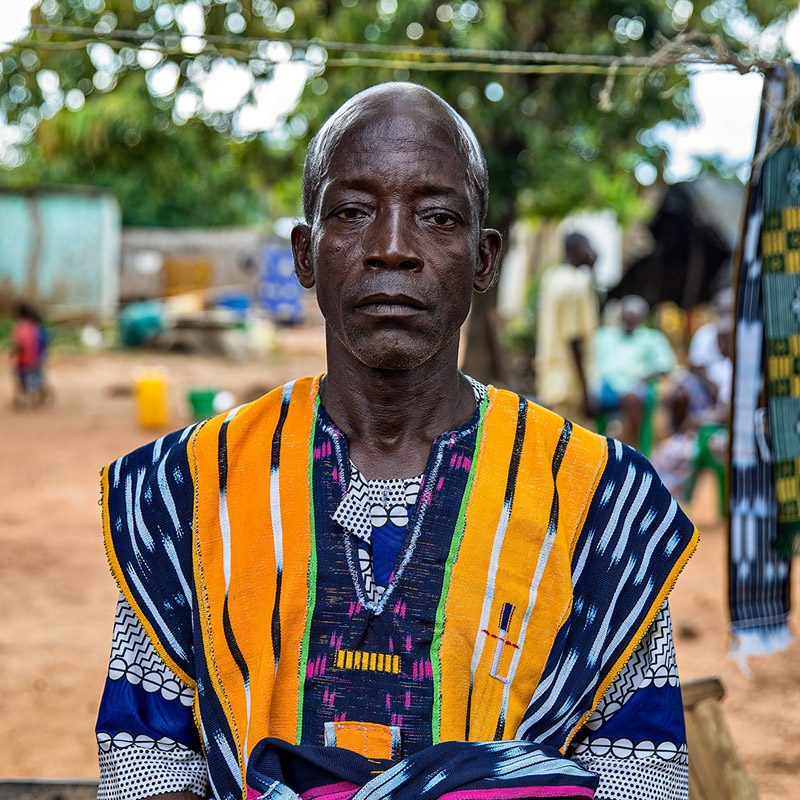
Meeting with the Baule people during a trip to the Ivory Coast.
Do you want to meet the Baule people of Ivory Coast?
Join Joan Riera on his next trip to Ivory Coast fom 24th June to 4th July 2024 to meet the Baule people and discover their world.Click here to discover more details about the trip to Ivory Coast in June 2024.
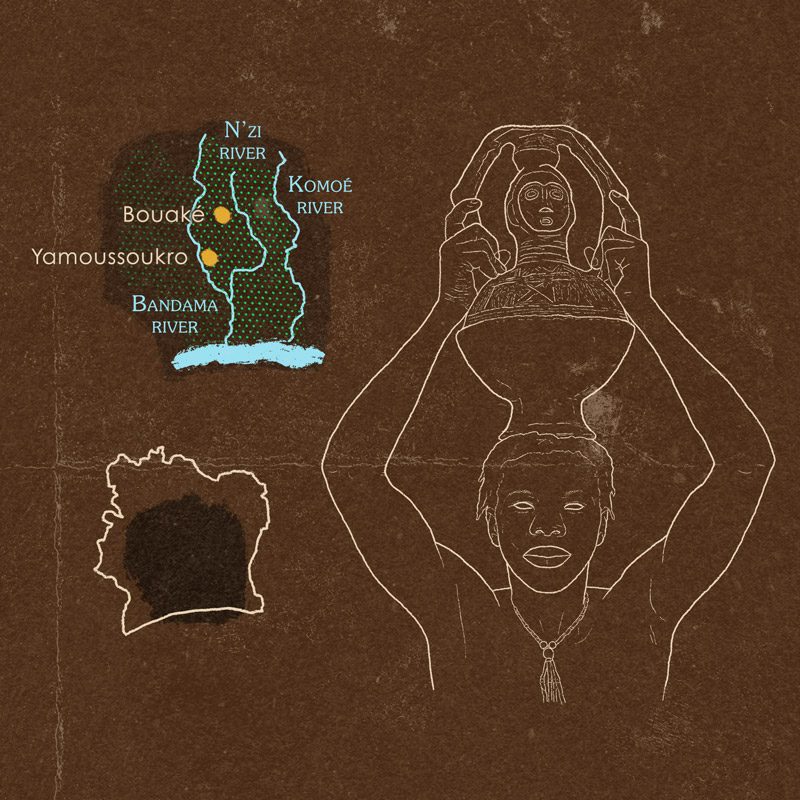
Location of the Baule people in the territory of the Ivory Coast.
Population and Ecosystem of the Baule people
The Baule people (also known as Baoulé) are an Akan group representing one of the largest ethnic groups on the Ivory Coast, made up of about 4,085,000 people. They live in a triangle-shaped region (the Baoule “V”) between the Bandama, N'Zi and Komoé Rivers. This area broadly encompasses the regions around the cities of Bouaké and Yamoussoukro.
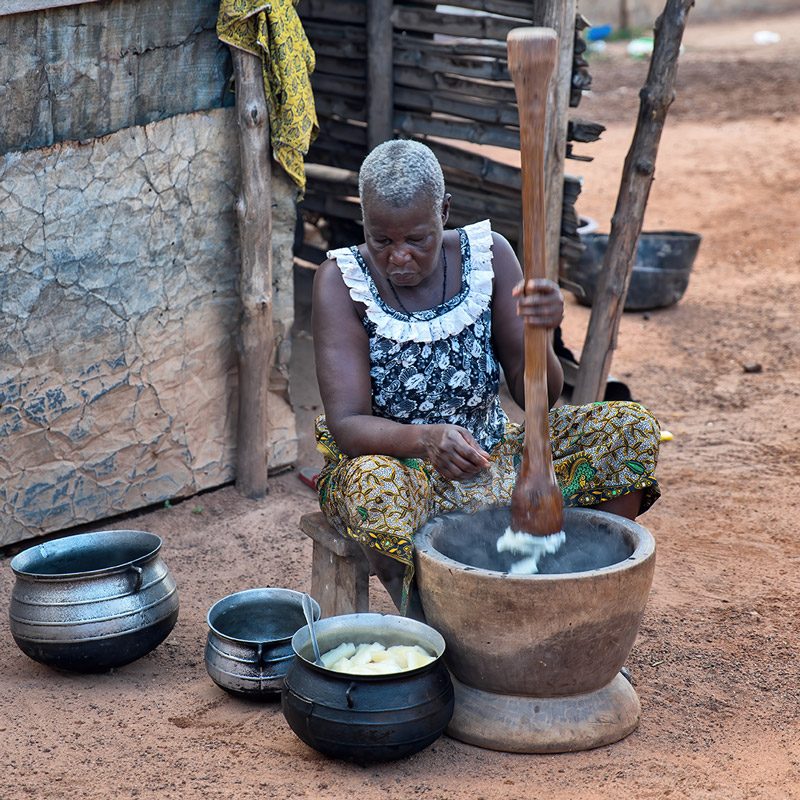
Baoulé woman pounding yam during a trip to the Ivory Coast.
Economy of the Baule people
Known as farmers, the Baule people supplement their staple food with yams and maize, as well as fish and bushmeat. Coffee and cocoa are major cash crops. The importance of the yam is demonstrated in an annual harvest festival, in which the first yam is symbolically offered to the ancestors, whose worship is a prominent aspect of Baule people's religion.
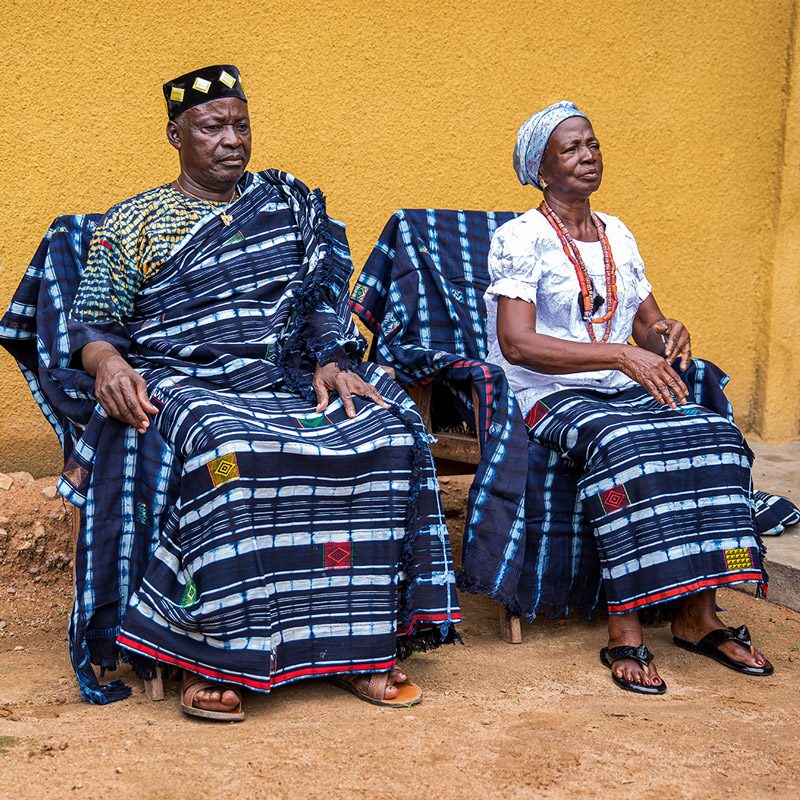
Audience with leaders of the Baule people during a trip to the Ivory Coast.
Social organization of the Baule people
The Baule people political structure is based on a council of elders representing the lineages getting together and discussing various issues affecting their village. ach village is ruled by a village chief (for small villages) or by a queen or king (for large villages), assisted by some notables or advisers. Baoulé political organization is matriarchal, and women's rights are very sacred.
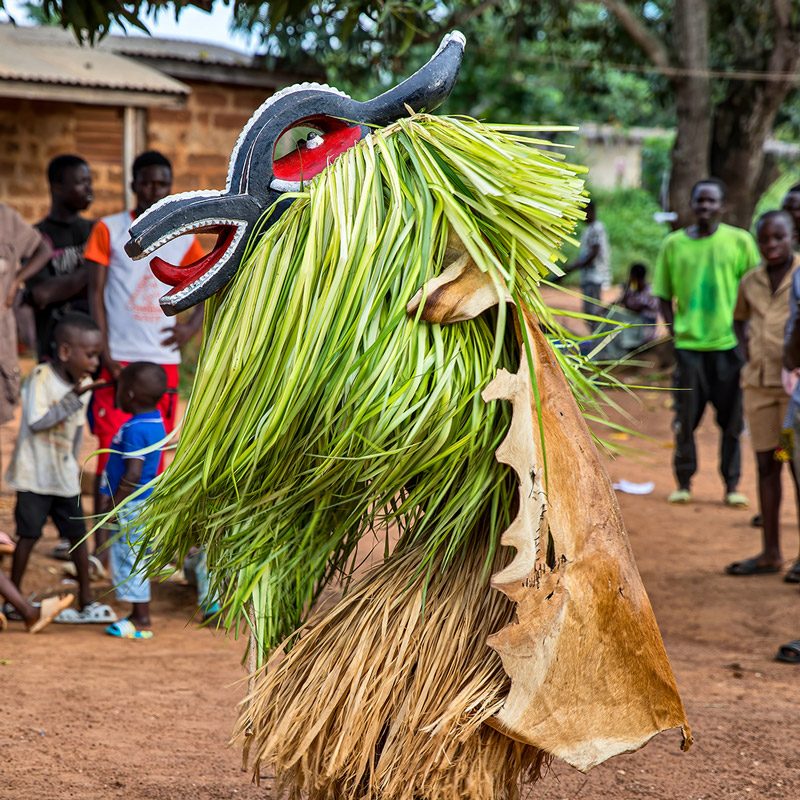
Attending the Bonu Amuen mask dance of the Baoulé people during a trip to the Ivory Coast.
Baoulé people's religion
Their animist religion is founded on the idea of the immortality of the soul. The Baule people believe in Nyamine, an intangible and inaccessible creator god, and Asie, the god of the earth world, who controls humans, plants and animals, as well as supernatural beings that reside in the mountains, rocks, rivers, forests, etc. The spirits of the ancestors, or amuen, are endowed with supernatural powers and live in the beyond (blolo).
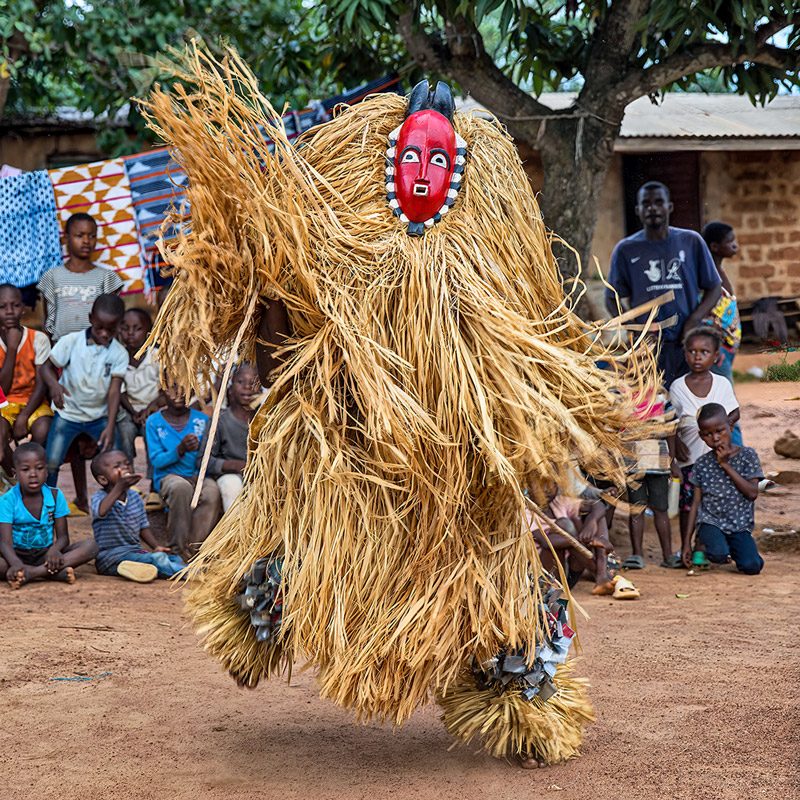
Attending the Gba Gba mask dance of the Baule people during a trip to the Ivory Coast.
Baule art
The Baule art is sophisticated and stylistically diverse. Wooden sculptures and masks allow a closer contact with the spirits of the ancestors and the supernatural world. The figures and human masks are elegant and well polished, with elaborate hair dressings and the typically raised scarification.
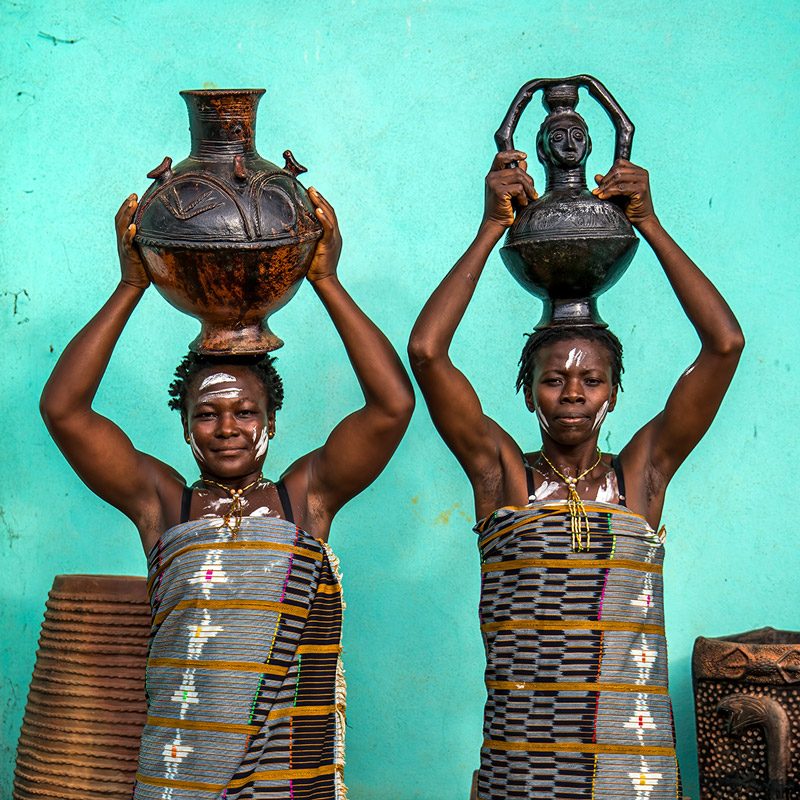
Baoulé women displaying a couple of beautiful examples of traditional pottery during a trip to the Ivory Coast.
Baule masks
Masks correspond to several types of dances: the Gba Gba, the Bonu Amuen, the Mblo and the Goli.
The Gba Gba mask is used at the funerals of women during the harvest season. It celebrates beauty and age, hence its refined features. The double mask represents the marriage of the sun and the moon or twins, whose birth is always a good sign.
The Bonu Amuen is a dance mask to protect the village from threats, and it appears at the commemorations of the deaths of notables. These masks presents a buffalo or antelope head made of wood, a suit with raffia, and metal bracelets for the ankles.
Mblo masks, used in entertainment dances, are one of the oldest of Baule art forms. These refined human face masks are usually portraits of particular known individuals. Ornaments above the face – birds, combs, horns, faces, and other decorative motifs – are chosen for their beauty, and have no iconographic significance.
The Goli Mask is a day-long spectacle that usually involves the whole village and includes the appearance of four pairs of masks, music played on traditional Baule instruments, and the consumption of a great deal of palm wine. Goli can be performed both as entertainment and for the funerals of important men. The very characteristic, round-shaped “lunar” Goli is surmounted by two horns.
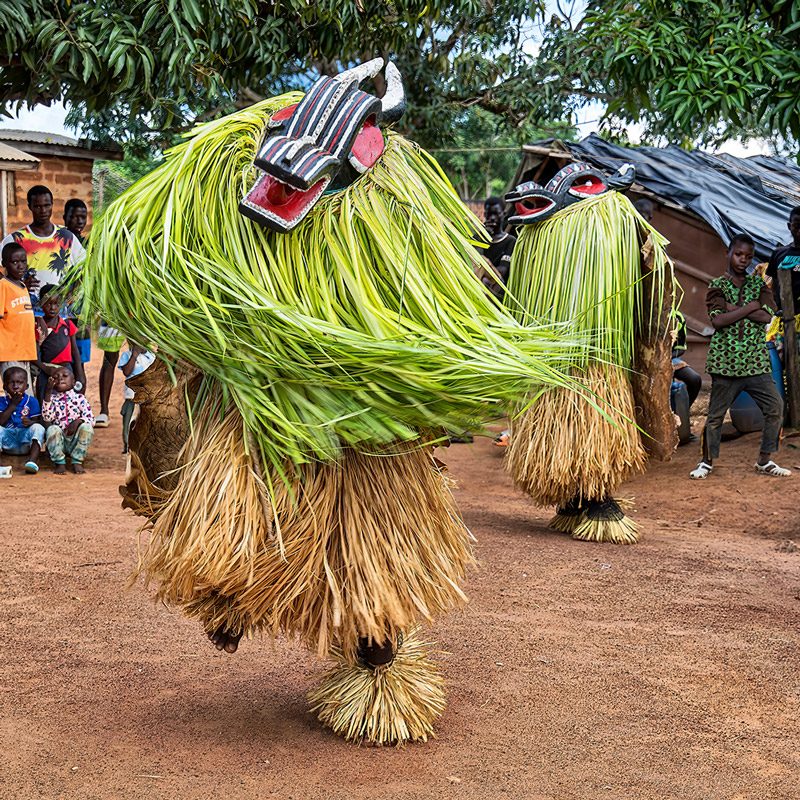
Attending the Bonu Amuen mask dance of the Baule people during a trip to the Ivory Coast.
Baule people pottery
Well-made pottery is appreciated by the Baule people for the beauty it brings to their homes. The Baoulé potters produce such dark-colored, wide-bodied pottery for a variety of household uses. They usually engrave geometric motifs inspired by archaic beliefs and rites into the body in order to embellish the pottery. Some pots have zoomorphic or anthropomorphic shapes.
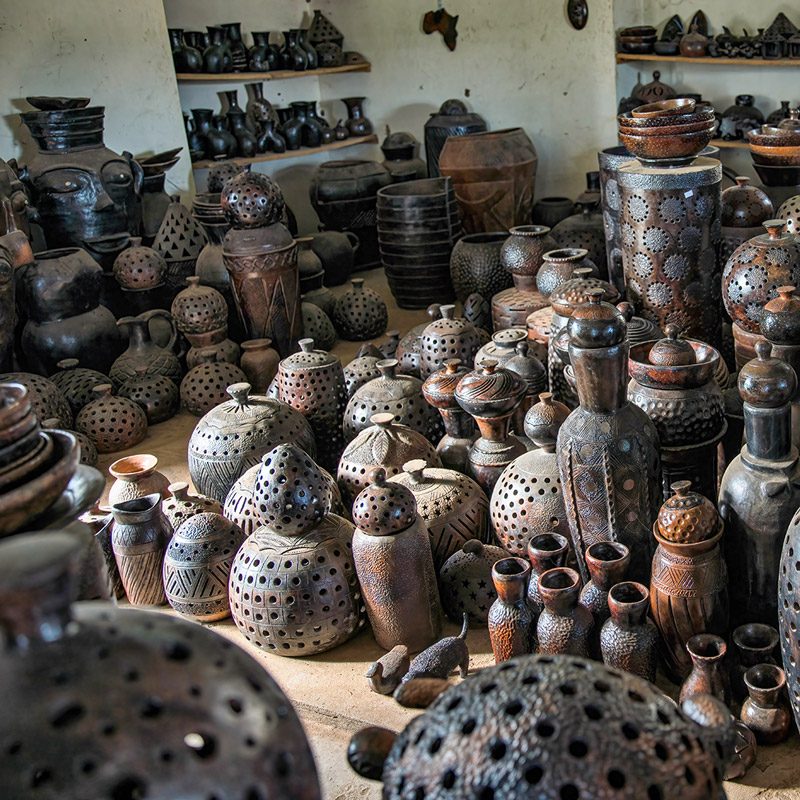
Display of Baule pottery in a master potter's workshop during a trip to the Ivory Coast.
Baule textile
The traditional Baule fabric is handstitched, died, and woven using a tenth-century set of techniques. First, the craftspeople convert raw cotton into yarns, which are bleached and later dried under the sun. After a few days, the yarn is dyed, usually with indigo leaves or other natural plants, and left to dry once again. Before the weaving process, the colored threads are placed on two wooden stands, according to the design. The result is narrow strips that are sewn together to form the full fabric.
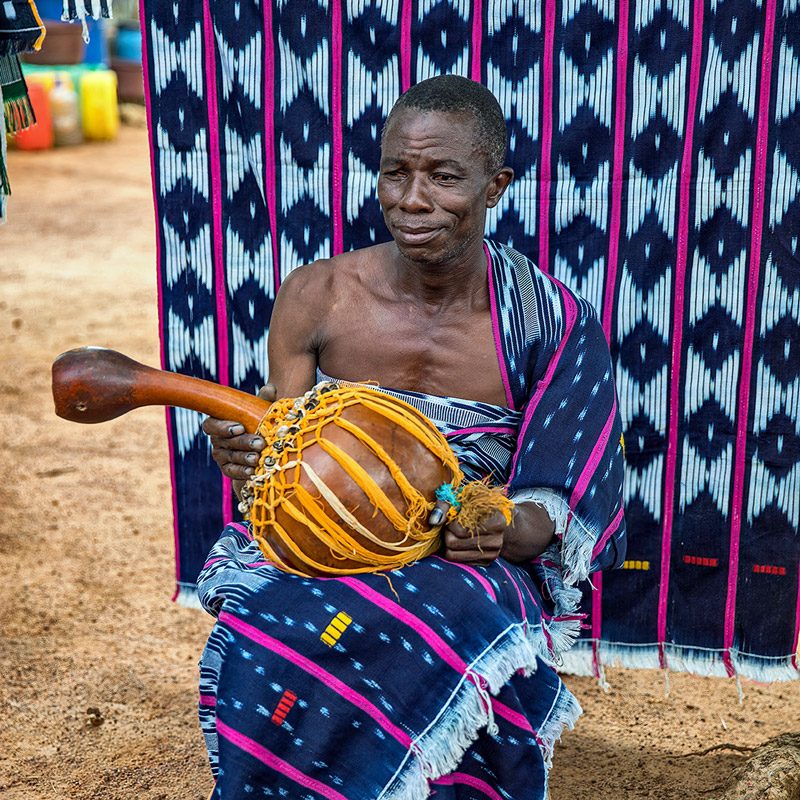
Musician dressed in Baule textiles during a trip to the Ivory Coast.
You can learn more about the Baoulé people of the Ivory Coast atwww.101lasttribes.com.
© Photos by Jordi Zaragozà Anglès taken during a Last Places trip to Ivory Coast.
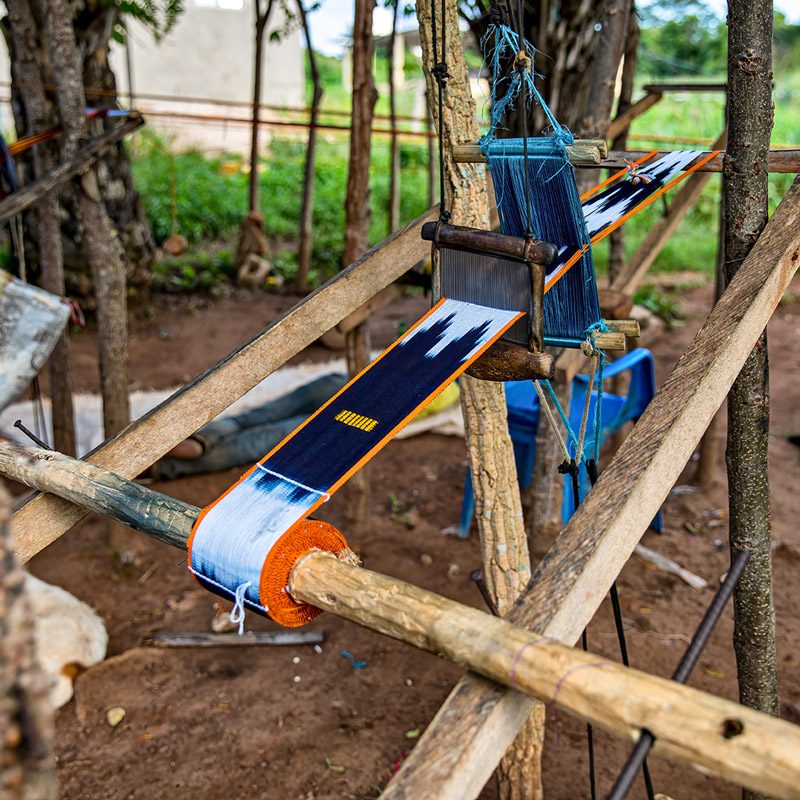
Traditional Baule loom.
